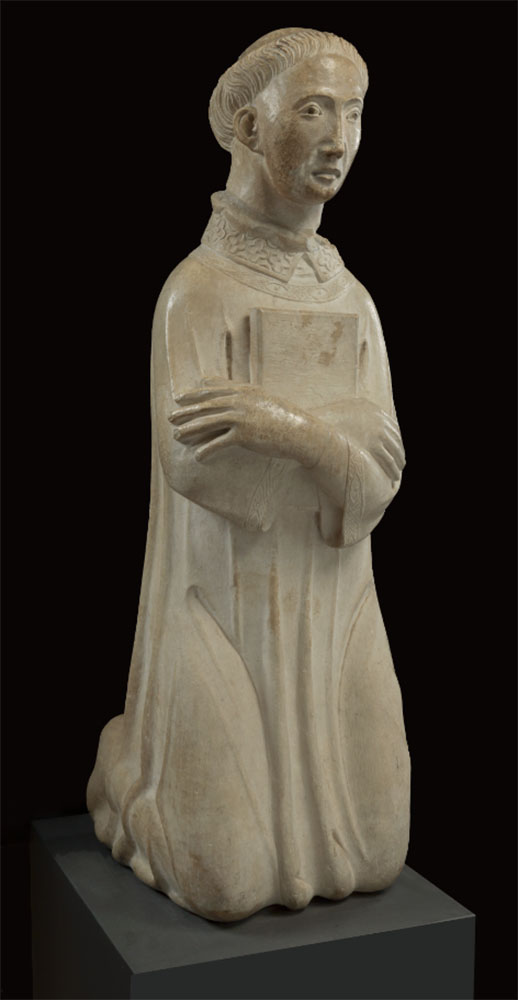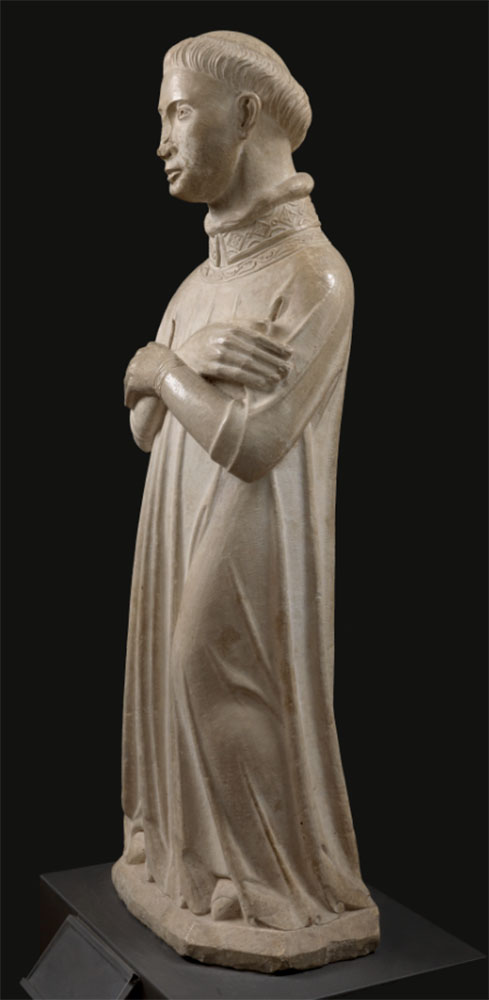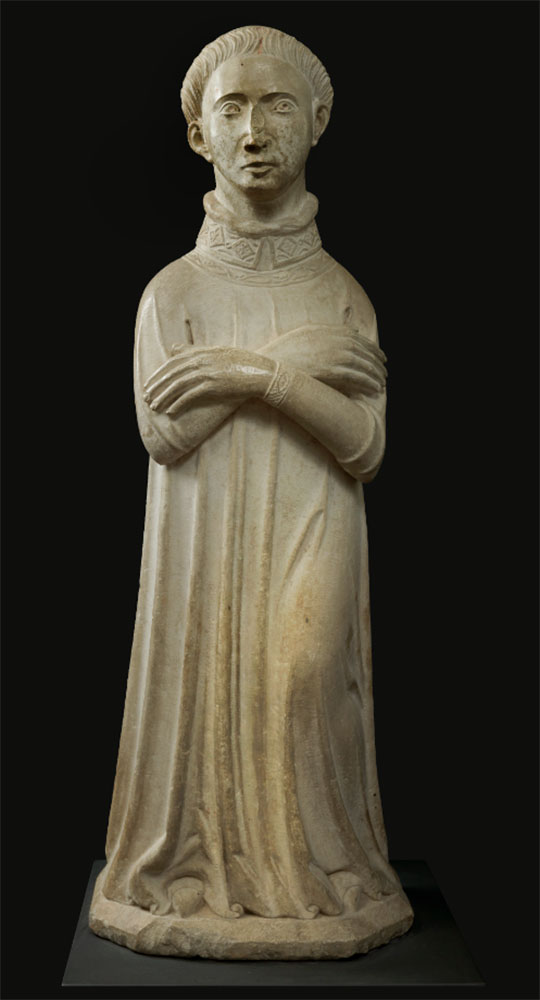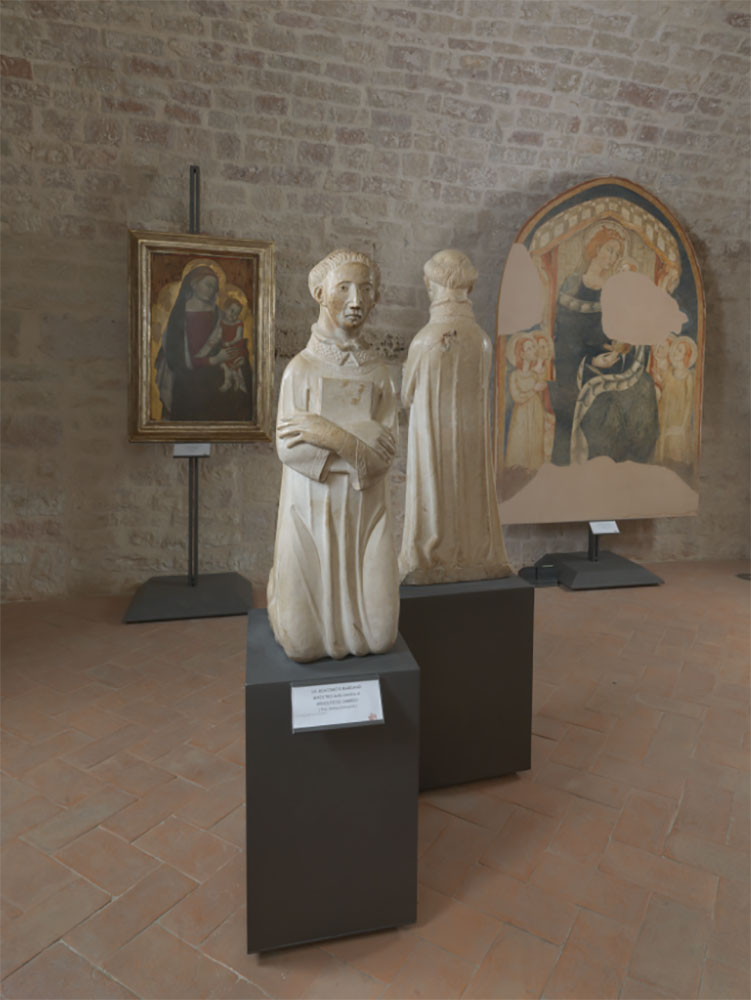Scultore Umbro (Cerchia di Arnolfo di Cambio?)
Inizi del XIV secolo
Santi diaconi Giacomo e Mariano martiri
Marmo con tracce di policromia, 100 x 31 x 38cm, 113 x 42 x 24 cm
Gubbio, Museo Diocesano
The two statues depict twoclerics, one standing, the otherkneeling, tonsured and with youthfulfaces, with almost the same features. Both, bearingtraces of polychromy, are alsoworked on the back but the greatercharacterization of the kneeling figure, with a book that he holds in hisfoldedarms. Ithas led us to believethatthissculptureplausibly in adoration of the Virgin, due to the hypothesized location within the upper part of a funeralmonument,couldhavebeen St. Marian.
The martyrplaced in a prominent position in the devotionexpressed by Gubbio to the twoAfricanSaints.
In reality,therewas some hierarchybetweenthem, Jamesbeing a deacon and Marian only a reader, aswelearn from the martyrologythatcelebratesthemtogether with othersaints of Numidia.A land from whichtheirremainsweresoonbrought to Italy, arriving in the Cathedral of Gubbio whichwasdedicatedto them. Itcould be possiblethattheycame from a tomb in the Gubbio cathedral, of whichwe no longerhaveevidence.
The sculptureshavebeenbrought back by the insufficient literature thatconsideredthem to a culture developed in Umbria especially on the basis of Arnolfo’sPerugian works, and thereforeassigneduntil the end of the 13th century.
The Arnolfian style can be identified in the setting of the bodies, in the geometricmodeling of the heads, aswellas in the essentiality of the drapery, both of the standing figure, which recalls the clerics of the bas-relief of the Annibaldi monument in San Giovanni in Laterano (approximately 1290).
Both of the kneeling figure, which recalls the model of the late thirteenthcenturysculpture, as can be seen from the comparison with Arnolfo’sreliefs of the Fountain of Perugia.
However, some decorative aspects of the collar and hem of the mantle can be compared with the geometricornamentalmotifs, adopted in the monument to Benedict XI in San Domenico in Perugia.
In particular, in the figures of St. Herculaneum and the Pope kneelingbeside the Virgin.
Comparisonthatrequires a dating to be containedbetween 1304, the date of the pope’sdeath, and 1306.
Based on thesechronological and stylistic data, the author of the statues of the twomartyrsreveals a culture matured on Arnolfo’s works butupdated on the figurative language of both the Assisi sculpture and the Orvieto sculpturevisible in the tomb of Benedict XI in San Domenico in Perugia.
The owner of the lostfuneralmonument can be foundbetween Bishop Francesco I (whodied in 1305) and his successor, Giovanni Bervaldi, Bishop of Gubbio between 1305 and 1313.
He belonged to the Order of Preachers or Dominicans, whohadentered with determination in the question of burialswithinreligiousspaces.
It can therefore be assumedthat the funeralmonument, to be datedwithin the second decade of the fourteenthcentury, itwasdedicated to a bishop, plausibly the onlyDominican in thischronologicalperiod.
Itwasexecuted by a sculptortrained in the last quarter of the thirteenthcenturybutstillactive and updated for a fewdecades of the following century.





